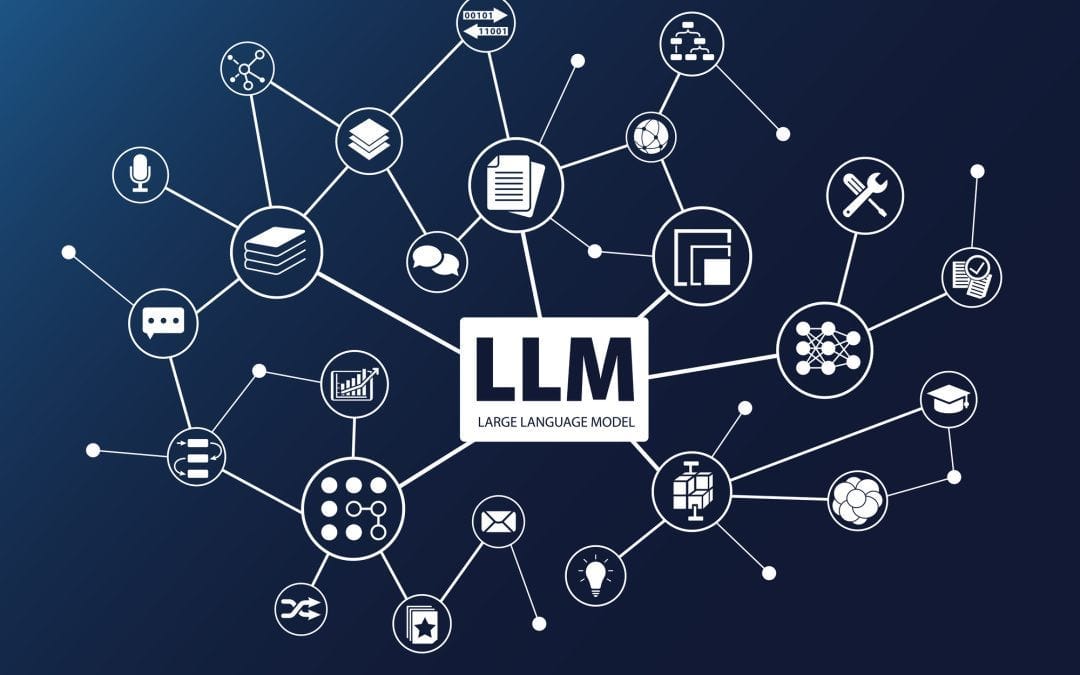Explore how Artificial Intelligence (AI) is transforming warehouse operations, enhancing efficiency from inventory tracking to demand forecasting.
Introduction
Warehouse management is experiencing a significant transformation driven by advancements in Artificial Intelligence (AI). As supply chains become more complex and customer expectations rise, leveraging AI technologies has become essential for improving efficiency, accuracy, and scalability in warehouse operations. This article delves into the latest developments in AI-powered warehouse management, highlighting key trends, practical use cases, and the challenges associated with implementation.

The Role of AI in Modern Warehouse Management
AI technologies enable warehouses to operate more intelligently by automating complex tasks, optimizing processes, and providing actionable insights. Key areas where AI is making a significant impact include:
- Automation of Repetitive Tasks: Reducing manual labor and minimizing errors.
- Data-Driven Decision Making: Leveraging large datasets for strategic planning.
- Enhanced Customer Satisfaction: Faster order processing and improved accuracy.
By integrating AI into Warehouse Management Systems (WMS), businesses can respond more swiftly to market demands and operational challenges.
Key Trends in AI-Powered Warehousing
Automated Inventory Tracking
AI-powered inventory systems utilize machine learning algorithms and Internet of Things (IoT) devices to provide real-time visibility of stock levels. Technologies such as RFID tags, barcode scanners, and computer vision enable:
- Accurate Stock Monitoring: Reducing discrepancies and preventing stockouts.
- Automated Replenishment: Triggering procurement when inventory levels fall below predefined thresholds.
- Shrinkage Reduction: Detecting and preventing theft or loss through real-time monitoring.
Technical Implementation
- Computer Vision Systems: Using deep learning models like Convolutional Neural Networks (CNNs) for object detection and classification.
- RFID Processing: Employing algorithms to handle multiple simultaneous tag reads and reduce signal interference.
- Inventory Prediction: Utilizing Long Short-Term Memory (LSTM) networks for time-series forecasting of stock levels.
- Data Integration: Implementing APIs (e.g., RESTful, GraphQL) for real-time data synchronization across systems.
Example: DHL Supply Chain implemented AI-based inventory management using drones equipped with cameras and RFID scanners, achieving an inventory counting accuracy of 99.9% and reducing the time taken for inventory checks by up to 80%.
Source: DHL Innovation Insights
Predictive Demand Forecasting
Predictive analytics harness historical data, market trends, and external factors to forecast demand accurately. Benefits include:
- Optimized Inventory Levels: Balancing supply with anticipated demand to reduce overstock and minimize carrying costs.
- Efficient Resource Allocation: Planning labor and equipment needs proactively.
- Improved Supplier Relationships: Aligning procurement schedules with demand patterns.
Statistic: According to a study by McKinsey & Company, companies using AI for demand forecasting can reduce errors by up to 50%, leading to significant cost savings.
Source: McKinsey & Company Report
Robotics and Autonomous Vehicles
Robotics and Autonomous Mobile Robots (AMRs) are transforming material handling within warehouses:
- Automated Picking and Packing: Robots handle repetitive tasks with high precision and speed.
- Efficient Material Transport: AMRs navigate warehouses to move goods without human intervention.
- Scalability: Operations can be scaled up or down based on demand without significant delays.
Case Study: Ocado, a UK-based online supermarket, uses AI-powered robots in their automated warehouses. The system can process a 50-item customer order in under five minutes, significantly faster than manual methods.
Source: Ocado Technology
AI-Driven Warehouse Analytics
Advanced analytics tools leverage AI to provide deep insights into warehouse operations:
- Process Optimization: Identifying bottlenecks and inefficiencies.
- Performance Monitoring: Tracking key performance indicators (KPIs) in real-time.
- Cost Reduction: Analyzing operational data to identify areas for savings.
Example: UPS utilizes its ORION (On-Road Integrated Optimization and Navigation) system, which processes over 30,000 route optimizations per minute. In its first year of full deployment, ORION saved UPS 10 million gallons of fuel and reduced CO₂ emissions by 100,000 metric tons. By 2020, these savings increased to 14 million gallons annually.
Source: UPS Pressroom
Enhanced Supply Chain Integration
AI facilitates seamless communication between the warehouse and other supply chain components:
- Real-Time Data Sharing: Improving collaboration with suppliers and distributors.
- Adaptive Logistics: Responding proactively to disruptions using AI algorithms.
- End-to-End Visibility: Tracking products throughout the supply chain for improved transparency.

AI Models Used in Warehouse Management
Demand Forecasting
- XGBoost: For short-term demand prediction due to its efficiency and accuracy.
- Facebook Prophet: For capturing seasonality and trend analysis in time-series data.
- SARIMA Models: For time-series forecasting that accounts for seasonality and non-stationarity.
Route Optimization
- Genetic Algorithms: For solving complex routing problems by mimicking natural selection processes.
- Reinforcement Learning: For dynamic routing adjustments based on real-time data.
- A* Pathfinding Algorithms: For efficient navigation in robotics and automated vehicles.
Image Recognition
- YOLO (You Only Look Once): For real-time object detection in inventory management.
- ResNet (Residual Networks): For image classification tasks with high accuracy.
- Mask R-CNN: For precise object segmentation and inventory counting.
Natural Language Processing (NLP)
- BERT (Bidirectional Encoder Representations from Transformers): For understanding customer orders and queries.
- Word2Vec: For product categorization and similarity analysis.
- Named Entity Recognition (NER): For extracting information from shipment documentation.

Implementation Framework
1. Technical Assessment
- Infrastructure Audit: Evaluate existing hardware, software, and network capabilities.
- Data Quality Metrics: Assess data completeness, accuracy, and timeliness.
- API Requirements: Document integration points and protocols needed for system communication.
2. Data Preparation
- Data Cleaning: Remove duplicates, handle missing values, and correct errors.
- Standardization: Ensure consistent data formats across all systems.
- Validation Protocols: Implement checks to maintain data integrity.
- Real-Time Pipelines: Set up systems for continuous data flow and processing.
3. System Architecture
- Microservices Design: For scalability and ease of maintenance.
- Load Balancing: Distribute workloads to prevent system overloads.
- Redundancy and Failover: Ensure system reliability and availability.
- Monitoring and Logging: Implement tools for tracking system performance and issues.
4. Pilot Program Structure
- KPI Selection: Define measurable outcomes such as picking accuracy or processing time.
- Success Criteria: Establish clear benchmarks for pilot success.
- Baseline Metrics: Record current performance for comparison.
- Contingency Planning: Develop protocols for handling system failures or setbacks.
5. Security Implementation
- Data Encryption: Protect data in transit and at rest using encryption standards.
- Access Control: Implement role-based access control (RBAC) to restrict system access.
- Intrusion Detection Systems: Monitor for unauthorized access attempts.
- Compliance Monitoring: Ensure adherence to regulations like GDPR or CCPA.
Technical Considerations
Hardware Requirements
Processing Units:
- CPUs: Multi-core processors (e.g., Intel Xeon or AMD EPYC) for handling general computing tasks.
- GPUs: High-performance GPUs (e.g., NVIDIA Tesla V100, A100) for training and running complex AI models, especially in image recognition and deep learning applications.
Memory and Storage:
- RAM: At least 64GB for moderate workloads; higher capacities (128GB or more) for intensive tasks.
- Storage: SSDs for faster data access; storage requirements can range from several terabytes to petabytes, depending on data volume.
Edge Devices:
- Embedded Systems: For real-time processing at the edge, devices like NVIDIA Jetson or Intel Movidius can be used.
Bandwidth Requirements
Minimum Network Speeds:
- Real-Time Applications: Minimum of 1 Gbps network speeds to support high-volume data transmission for real-time processing and decision-making.
- Cloud Connectivity: Reliable high-speed internet (fiber-optic connections recommended) to ensure seamless communication with cloud services.
Latency Considerations:
- Low Latency: Critical for applications like robotics control and real-time analytics; target latency under 10 milliseconds.
Database Scaling Recommendations
Database Systems:
- Relational Databases: Use scalable solutions like MySQL Cluster or PostgreSQL with partitioning for structured data.
- NoSQL Databases: Employ databases like Cassandra or MongoDB for handling large volumes of unstructured or semi-structured data.
Scaling Strategies:
- Horizontal Scaling (Sharding): Distribute data across multiple servers to handle increased load.
- Vertical Scaling: Upgrade server hardware (more CPU, RAM) to improve performance.
- Distributed Computing: Utilize frameworks like Apache Hadoop or Spark for big data processing.
Cloud vs. On-Premise Implementation
Cloud Implementation:
- Advantages:
- Scalability: Easily adjust resources based on demand.
- Cost-Effective: Pay-as-you-go models reduce upfront costs.
- Maintenance: Cloud provider handles infrastructure maintenance.
- Disadvantages:
- Data Security Concerns: Sensitive data stored off-site may raise compliance issues.
- Latency: Potential delays due to data transmission over the internet.
On-Premise Implementation:
- Advantages:
- Data Control: Complete ownership and control over data.
- Customization: Greater flexibility to tailor systems to specific needs.
- Reduced Latency: Faster data processing as systems are local.
- Disadvantages:
- High Initial Costs: Significant investment in hardware and infrastructure.
- Maintenance Responsibility: In-house team required for system upkeep.
Hybrid Approach:
- Combination of Both: Critical systems run on-premise, while less sensitive or scalable components utilize cloud services.
- Benefits: Balances control with flexibility and cost savings.
Challenges and Limitations
Technical Limitations
- Processing Latency: High-resolution image processing can introduce delays; optimization is needed for real-time operations.
- Error Rates: Even advanced AI systems may have a 0.5% to 1% error rate in tasks like inventory counting.
- Network Requirements: Real-time data processing demands high-speed networks.
- Storage Needs: Large datasets for machine learning models require significant storage capacity.
Implementation Challenges
- Integration with Legacy Systems: Difficulty in interfacing new AI solutions with existing infrastructure.
- Data Silos: Disparate data sources can hinder AI effectiveness.
- Scalability: Ensuring that systems can handle growth in data volume and complexity.
Ethical and Regulatory Considerations
- Privacy Concerns: Managing sensitive data responsibly to protect employee and customer information.
- Regulatory Compliance: Navigating laws related to data protection and AI usage.
- Addressing Challenges: Successful implementation requires thorough planning, stakeholder engagement, and continuous evaluation.
Cost Analysis and ROI
Implementation Costs (Industry Averages)
- Initial Infrastructure: $500,000 to $2 million for a medium-sized warehouse.
- Software Licensing: $100,000 to $500,000 annually, depending on the solution.
- Data Preparation: $50,000 to $200,000 for data cleaning and setup.
- System Integration: $200,000 to $1 million for integrating AI with existing systems.
- Annual Maintenance: Approximately 15% to 20% of the initial implementation cost.
ROI Timeframes
- Basic Automation: Return on investment typically seen within 12 to 18 months.
- Advanced AI Implementation: ROI may take 24 to 36 months due to higher complexity and costs.
- Full Digital Transformation: Expected ROI over 3 to 5 years, with benefits compounding over time.
Note: These figures are estimates and can vary based on specific circumstances such as warehouse size, complexity, and the chosen technology vendors.
Future Outlook
The adoption of AI in warehouse management is expected to accelerate, driven by advancements in:
- Machine Learning and Deep Learning: Enhancing predictive capabilities and decision-making.
- Edge Computing: Reducing latency by processing data closer to the source.
- Collaborative Robots (Cobots): Enabling humans and robots to work safely side by side.
- 5G Connectivity: Providing faster data transmission and supporting real-time applications.
Industry Projection: According to Fortune Business Insights, the global AI in supply chain market size was valued at $5.61 billion in 2022 and is projected to reach $20.18 billion by 2029, exhibiting a CAGR of 20.6% during the forecast period.
Source: Fortune Business Insights
Conclusion
AI is revolutionizing warehouse management by introducing intelligent solutions that enhance efficiency, accuracy, and scalability. From automated inventory tracking to predictive analytics, AI technologies are enabling warehouses to meet the demands of modern supply chains effectively. While challenges exist, careful planning and strategic implementation can unlock significant benefits, positioning businesses for sustained success in an increasingly competitive landscape.
Contact Us
Curious about our tailored AI solutions for your operations? Let's talk!
- Email: mehdi@miragemetrics.com
- Website: www.miragemetrics.com
- Schedule a Free Call: Book a Consultation
References
DHL Innovation Insights: Drone-Powered Inventory
McKinsey & Company Report: Using Machine Learning to Improve Demand Forecasting
Ocado Technology: Ocado Smart Platform
UPS Pressroom: Optimizing Delivery Routes with ORION
Fortune Business Insights: AI in Supply Chain Market
Grand View Research: Warehouse Robotics Market Size Report
Supply Chain Digital: Optimizing Warehouse Efficiency with AI
Amazon Robotics: Technology Behind the Click
Deloitte Insights: AI-Augmented Workflows in Supply Chain
Siemens Case Studies: AI in Manufacturing

![Fuel Tracking Systems: The Ultimate Guide to Cutting Logistics Costs [2024 Edition]](https://assets.superblog.ai/site_cuid_cm2eekg9r004zm1jllml11hnn/images/image-2-1731338851911-compressed.jpg)
